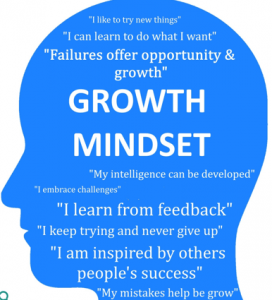Be even more cognizant of diversity in your online students.
Consider all the ways in which learners can be diverse. Diverse identities typically come to mind first. Remember also that there is a diversity of ways in which learners process incoming information and a large percent of challenges to learning for students in your classroom are ‘invisible’ (read more on invisible disabilities here).
Even for educators that are as present as it is possible to be in their online learning environments, the nature of the virtual classroom is that it is harder to ‘see’ even the diversity that would be ‘visible’ face-to-face, not to mention the invisible diversity in our students. This reason alone is all the rationale needed to argue for putting scaffolding and guidelines in place at the outset of your course meetings to ensure a welcoming and inclusive online climate.
One of many strengths of Cornell Engineering is its diversity. The College is the most culturally diverse at Cornell and is approximately 50% women at the undergraduate level. Other important aspects of cultural diversity in the classroom, face-to-face or online, are individual identities such as sexuality, or socio-economic situation.
Each of these aspects of diversity enriches our community. Thoughtfully considering and integrating the experience of a diverse student body into your learning environment will result in the greatest gains, but is not easy. Thus, the care you take in creating a respectful, integrated socially and intellectually inclusive classroom, online or face-to-face, is the key to facilitating great learning!
Opportunities accompany online inclusion
Working online may take some of the pressure off a student whose first language is not English. The online environment can help to equalize participation and allow shy or reserved, or socially anxious students to respond in writing and through asynchronous tasks. The online environment allows expression with some autonomy. If we, especially those of us who are new to online teaching and learning, can focus on the opportunities, we will likely be more successful and convey that positivity to our students, many of whom are unwilling participants in this global experiment as well.
Recognize and avoid ‘Microaggressions’
Caution must be taken to avoid unconscious biases in our wonderfully diverse classrooms. Even subtle unconscious biases can lead to detrimental outcomes for self-confidence, learning, and motivation for those who are on the receiving end. For more reading on respecting and valuing diversity and inclusion in our community and learning environments please visit Cornell CTI – Building inclusive classrooms. Here you will find resources that include practices for inclusivity, suggestions for how to respond to an incident that includes bias or other behavior that influences the teaching environment and students in it.
Microaggressions are “brief and commonplace daily verbal, behavioral and environmental indignities, whether intentional or unintentional, that communicate hostile, derogatory or negative racial slights and insults that potentially have harmful or unpleasant psychological impact on the target person or group” Sources: Solorzano, Ceja, & Yosso, 2000.
To avoid microaggressions:
This link will take you to an excellent pdf about microaggressions and how to avoid them.
This link will take you to an article that has excellent advice for responding to microaggressions in the classroom.
Here are some practical reminders to help create an inclusive climate in the online learning environment:
- Re-read carefully your written instruction and scenarios: the written medium (as in online posting) is one that is more open to interpretation than speaking to students in a face to face environment where body language and eye contact can be critical cues.
- Know students’ names and how to pronounce them. Review your class roster. You will have more difficulty seeing your students online, and thus it will be even more valuable to review the roster with pictures of the students. Avoid slang and idiomatic expressions in written and spoken language for improved understanding.
- Beginning of your semester, and regularly thereafter, provide opportunities for students to get to know each other online through activities that are intentionally structured for that, or through opportunities for students to work in ‘breakout rooms’ on constructing knowledge, and ask that they begin with a fun introduction of themselves.
- Breakout rooms are inherently social. Some students with social anxiety may find them stressful. Encourage camera use so students can see each other, but also allow cameras not to be used if it feels uncomfortable for any participant (this can apply to all synchronous zoom meetings). Additionally, allow participants opportunities to respond in writing rather than speaking in breakouts if it will reduce anxiety.
- Speak clearly and naturally, at moderate speed. Remember, some students are taking notes as you speak, just as they do in face-to-face class. Remember that English is not the first language of all your learners.
- Deal with issues of disrespectful behavior (and microaggressions) in any student interactions ‘off-line’ but immediately, e.g. the instructor may choose to email a student with concerns.
- Keep your own tone clear, concise and polite during written and oral feedback to students.
- Provide students the opportunity to work in mixed groups (with respect to language differences) to help each other as often as possible.
Remember compassion for yourself, your students, and the whole community
No one saw this  coming, and you are not expected to be an immediate expert in online teaching and learning! Setting the stage by creating a welcoming and inclusive environment is the key to being able to try some new engaging techniques using online tools and practices. Remember too: always keep a growth mindset for yourself as you grow your skillset, and the learners in your class. Help them keep that same mindset for their own challenges!
coming, and you are not expected to be an immediate expert in online teaching and learning! Setting the stage by creating a welcoming and inclusive environment is the key to being able to try some new engaging techniques using online tools and practices. Remember too: always keep a growth mindset for yourself as you grow your skillset, and the learners in your class. Help them keep that same mindset for their own challenges!

